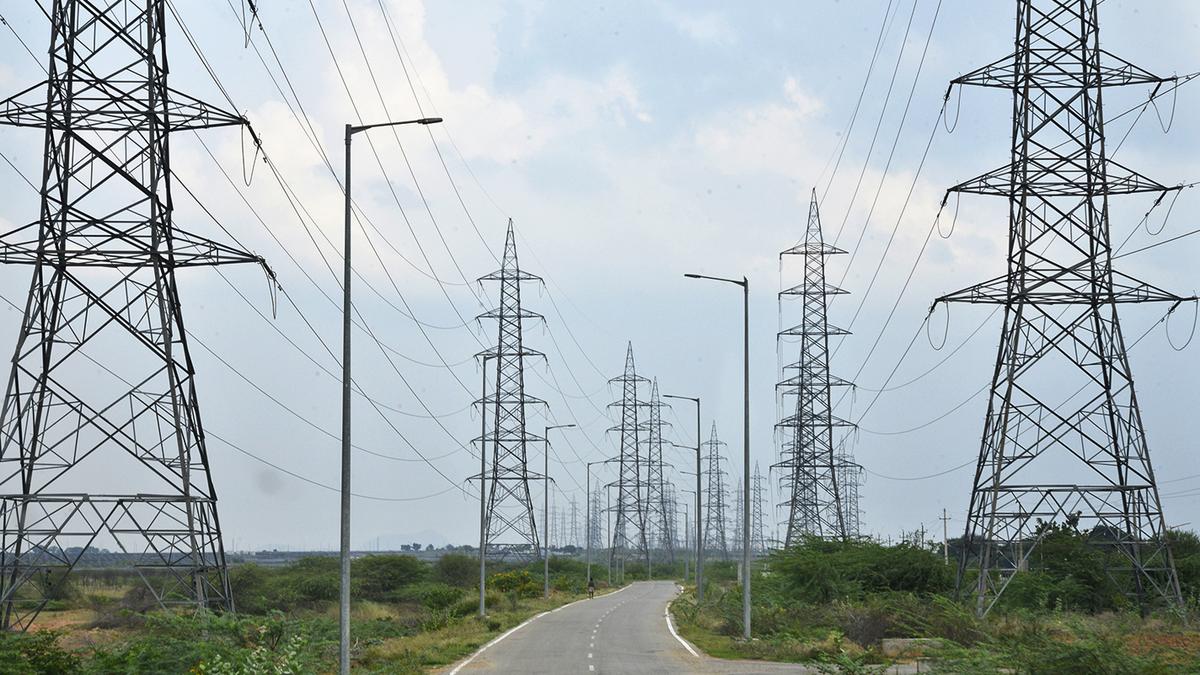The grid met a record peak load of 250 million kilowatts on May 30, which shattered the previous record of 240 million kilowatts set in September 2023. File
| Photo Credit: BHAGYA PRAKASH K
India’s electricity grid has remained stable despite a record-shattering heatwave in May, demonstrating a high degree of technical skill and avoiding embarrassing blackouts during the election period.
Daily temperatures in the New Delhi suburb of Palam have averaged a seasonal record 35.1°C so far in May, up from 30.1°C in May 2023 and a long-term seasonal average of 33.3°C. The exceptionally high temperature is likely to have increased the demand for air conditioning and refrigeration to record or near-record levels for the time of year.

The grid met a record peak load of 246 million kilowatts on May 29 and then 250 million kilowatts on May 30, shattering the previous record of 240 million kilowatts set in September 2023. But the transmission system has been unusually stable throughout the heatwave – more stable than in other periods when demand was considerably lower.
Transmission frequency fell below the minimum acceptable target of 49.9 cycles per second (Hertz) for just 2.3% of the time in the first 30 days of the month. This has been the grid’s best monthly performance for more than two years, despite the enormous extra demands imposed by the heatwave.
By contrast, the frequency was below target 9.8% of the time in May 2023 and May 2022, according to reliability reports published by the Grid Controller of India.
Keeping up with the booming demand
Frequency is the simplest and most commonly employed measure of power quality and reliability; controllers endeavour to keep it steady and very close to target at all times. Frequency above target (“over-frequency”) is a sign that there is excess generation connected to the network compared with the load. Frequency below target (“under-frequency”) signals the opposite.
Repeated and prolonged periods of under-frequency are a sign the grid is struggling to meet demand; they increase the risk of cascading failure, forcible customer disconnections and uncontrolled blackouts.

In the autumn of 2021 and again in the spring of 2022, coal shortages meant many power generators were unable to start up in response to instructions from the grid. The result was electricity shortages, prolonged and severe under-frequency, imposition of rotating power cuts, and uncontrolled blackouts across the country.
Since then, the government has attempted to prevent a repeat by prioritising coal movements across the rail network and accumulating large coal inventories on-site at power generators. But grid controllers also seem to have ensured reliability this month by scheduling an abundance of generation to give themselves an extra reserve margin.
Unusually for India, where booming demand and insufficient generation more often mean average daily frequency falls below target, the frequency was above target on 22 of 30 days so far this month. The grid frequency in the first 30 days of May was the highest for any month in more than two years, despite the heatwave.
Controllers seem to have been scheduling too much generation to ensure they had an extra margin in case the demand was higher than predicted. Systematic over-frequency is costly as extra fuel is consumed, but it also buys an increase in reliability and reduced risk of power cuts.
By scheduling as much generation as possible the transmission system kept air conditioners running through the heatwave and the election period.


